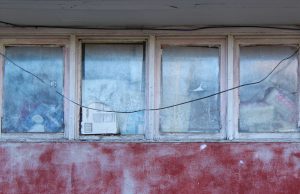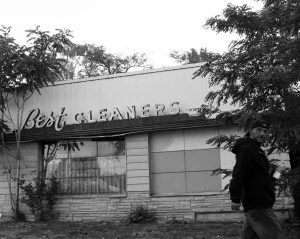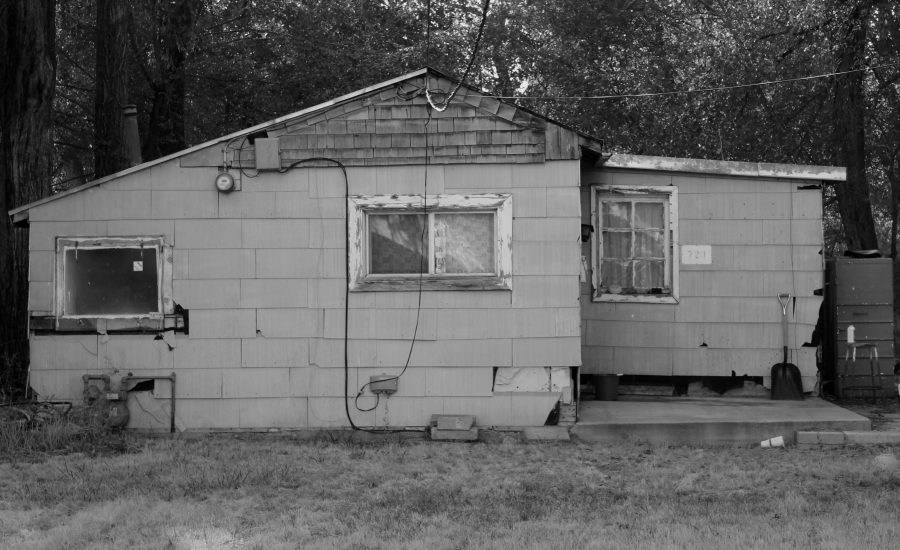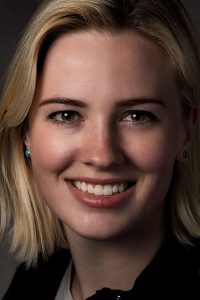The house I grew up in is located one block west of State Street in Murray City, but I feel that my life has always functionally been that of someone living in my community’s east side. The radius in which I was allowed to move unsupervised was relatively small and I became intimately familiar with the east side neighborhoods where my friends and I would roam. The majority of the schools, restaurants and friends’ houses that I frequented were all located on the east side of the Salt Lake Valley in a predominantly white bubble.
I began to pick up on the intersection of race and geography in our communities when I was in high school. It’s hard to miss the charged understanding of race in these environments. Teenagers, ever in pursuit of edge and attention, regularly participate in racist jokes and bullying. My school was no different. Participating students were likely parroting ideas that the adults around them had exposed them to. They were strangely adamant that anything west of State Street was “the ghetto” and “scary.” These comments were not only deeply offensive, but they drew an oddly specific target for east-side kids without having them experience exposure to whatever crime or discord they believed was happening to the west of their city. Where were these kids, without drivers licenses, getting such vivid information about that side of town?
I eventually graduated and moved to Salt Lake proper, where such kinds of bitingly racist comments were replaced by quieter and more socially acceptable prejudices. My day-to-day routine took me through the posh Avenues and Sugarhouse neighborhoods, liberal strongholds where Tibetan prayer flags drape across every other porch and trilingual yard signs offer a welcome to their neighbors. I think most people in Salt Lake assume that they don’t exhibit the same discomfort about race as those in more conservative suburbs do, yet I had friends of color tell me that they feel “very brown” in these areas, like a spotlight has descended upon them.

Unfortunately, the weird, cagey vibe about race and the west side is still there — though it manifests in general cultural appropriation and people acting high-strung about who is walking around their neighborhoods. Even in socially progressive circles, I have seen friends harassed due to their race and heard students shy away from volunteering with political campaigns because knocking doors past I-15 was “too sketchy” for them. Oddly enough, I canvassed last year down in Utah County and the residents of their west side told me that no politician had bothered to reach out to them in years, probably due to a fear of gangs… in Provo, Utah.
It’s not something that sits well, this acceptance of the east side as the default, as if it is the perpetually normal and safe place to be. The inverse treatment of those living on the west side is unflattering and unkind. It is often stigmatized and referred to as a land of rundown properties, homelessness and crime. That’s not to say there are not those things, but it’s the constant, hyperbolic fear of them that is worth a little eye-rolling towards.
It’s important to address subconscious biases, to look inward and to analyze why one feels the way they do about other people. Nobody should go looking for facts with stereotypes as their source material. People should think twice about their jokes about the west side, where they got their information from and why they might be making such remarks. People snark about the west side being beaten down, joking about pit bulls behind chain link fences, ethnic grocery stores and drug fronts. Progressing that narrative is socially irresponsible. It’s damaging, dehumanizing and usually targets race. A lack of empathy creates enough emotional distance for people to comfortably laugh at those jokes, but it’s wrong. However innocuous these comments seem, they feed a sense of superiority and solicit judgment from people without any real desire to create solutions.
Racial Undertones
The west side gets criticism for being unkempt and unwelcoming, descriptions that are stereotypically assigned to areas with large populations of racial minorities, immigrants or refugees who aren’t from Anglo or European countries. There is no denying that race is a factor here. These communities struggle for acceptance in Utah, where they may not have access to many resources and suffer the weight of judgment and bullying by some who consider themselves as the “rightful” residents of an area.
Growing up, I regularly heard people explain that Utah can’t be racist because there aren’t enough people of color here to be racist against. Believing something as ignorant as that is quite the double whammy— it assumes that both discrimination is somehow less pervasive if its target is on the smaller side and deflects responsibility just in case it’s not. Saying this kind of thing works because it plays upon the common understanding that Utah has an uneducated, regressive culture around race.
The discomfort surrounding race is so strong in Utah that even white people who are not personally affected by it are able to pick up on it, though not necessarily because they see it as a problem. It’s pretty clear what they’re tapping into when they are extremely opinionated about another group of people and the part of town that they live in even if they can’t explain why they are so bothered. Claiming that there aren’t enough people of color in Utah to experience racism is an inaccurate, irresponsible erasure. People of color have always lived here (the traditional homeland of several indigenous peoples) and their identities, culture and communities are not interchangeable with one another. If white Utahns aren’t used to seeing them and sharing space with them, it’s because their communities are constantly being edged out further westward.
The vast discrepancy of diversity from east to west is hardly coincidental. Many of these communities have been there for decades, creating a safe haven with a little more shelter from open staring, microaggressions and confrontation. Many immigrant families move to the west side, calculating between finding an affordable home and choosing a neighborhood where they can safely assimilate. No matter where a person lives, they are usually just trying to make it work, whether that entails finding and keeping their job, pursuing education, starting a business, providing for a family or whatever it takes to live a productive, fulfilling life.

Within the last year, the Salt Lake branch of the NAACP has warned of a marked increase of racial slurs in Utah schools. Branch president Jeanetta Williams attributed it to the emotional distance between communities, where “maybe some of the students aren’t interacting on a daily basis with people of color.” Utah teens have become targets of heightened racist bullying, with one student verbally accosted and spit on. Two years ago, two men were kicked out of a Salt Lake City bar after being told that it “can’t serve Polynesians.” Whether it’s a racial slur tacked up on a West Jordan Popeye’s sign, pretty blonde cheerleaders making foul videos of shouting the N-word or a crowd of Woods Cross students chanting “Build the Wall” at a football game, it’s fair to say that Utah exhibits stigmatizing attitudes toward communities of color.
It’s no wonder that people of color might feel uncomfortable moving into predominantly white areas— these neighbors don’t always roll out the welcome wagon. For a person of color, Utah’s constant pressure surrounding race may create an unwelcoming environment. It can result in essentially segregating certain areas, affecting the education of students of color and increasing anxiety in everyone. In the last few years, that tension has only increased.
A Call to Action
Something more needs to be done about the divides between communities. The demographics in this state are changing and there can be no more shunting people out of sight and out of mind. West Valley City (Utah’s second largest city after Salt Lake) has recently become “majority minority,” with diverse people of color making up 51.4 percent of the city’s population. At 27 percent, the Ogden-Clearfield metro area has the ninth highest interracial marriage rate in the country.
It’s extremely distasteful to use social factors to push people of color to the west side and then to describe those areas as run-down, unappealing and dangerous. It encourages racism and division, something we should not allow and cannot afford as a rapidly growing and diversifying state. We have a moral obligation to respect and invest in these communities.



